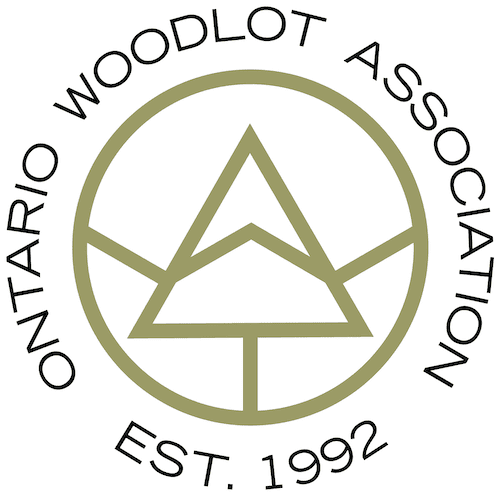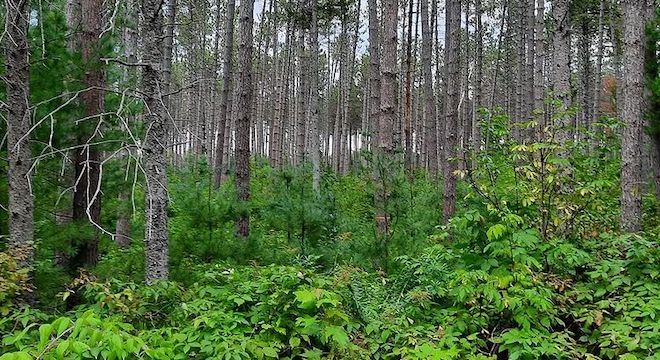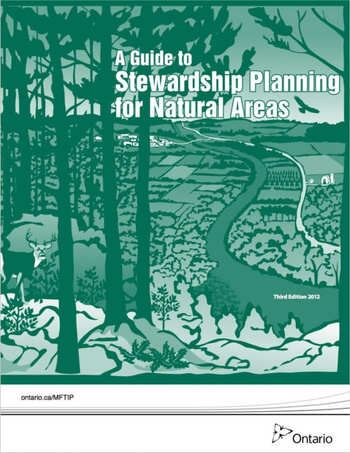- About
- Member Resources
- Woodland 101
- MFTIP - PRIVATE LAND FORESTRY CODE OF PRACTICE
Private Land Forestry Code of Practice |
The Ontario Woodlot Association has developed a Code of Practice that promotes the environmentally and financially sustainable operation of private woodlots within the framework of the woodlot owners' objectives. The Code will guide woodlot owners on how to develop a management plan that allows for forest product extraction while minimizing impacts on the environment and maintaining forest values. The Code also emphasizes that control of activities within the woodlot rests with the owner. However, it is also based on the notion that the woodlot should be considered as an integral part of the larger landscape or ecosystem, to be sustained indefinitely. Therefore owners should consider the needs of other woodlot users and the community at large when making management decisions. Woodlot owners have the final say concerning the future of their property, but they also have a responsibility to sustain the resource for future generations. Over 90 per cent of the forested land in southern Ontario are privately owned. These lands support jobs and recreational activities, as well as providing forest products for local, national and international markets. But now, society's demands for protecting the environment mean that woodlot owners are being asked to do even more. Not only should they contribute to society's economic well-being, they should also maintain biological diversity and wildlife habitat. It is a large task, but it is achievable if the woodlot owner is willing to take the initiative. Forest values and forest product extraction can both be maintained in a sustainable manner. Many current forest practices on private lands, however, are either not sustainable or could be performed in a more sustainable way. Woodlot owners and the forest industry realize that a change is needed to improve current practices. A recent survey of Ontario Woodlot Association members found that 85 per cent believe that there is a need for the forestry/logging industry to demonstrate that sound environmental practices and good forest management will lead to sustainable forestry. Principles of the Code of PracticeWith an understanding of the present state of his or her property, the woodlot owner can form a plan to manage the woodlot sustainably. The following points should be considered in any plan: Safety
Biological Diversity and Wildlife Habitat
Wetlands and Sensitive Areas
Responsible Management Activities
Protection
Regeneration
RecommendationsInventory and Interpretation of the WoodlotKnowing and understanding what their personal goals and objectives are for owning a woodlot will make it easier for woodlot owners to make management decisions and to develop a plan to meet these objectives. Once these objectives have been decided, the woodlot owner should take a few steps to ensure that all pertinent information about the woodlot has been obtained. A complete inventory should be undertaken. Questions that should be asked during this inventory include: The ForestWhat is the composition and age of the forest? Is there merchantable timber or firewood in the woodlot? What other types of plants and shrubs are there? Are they rare or endangered? Soils and SlopeWhat type of soils exist? Are there areas of steep slope? Water and DrainageAre there bodies of water, streams (seasonal and permanent), swamps or marshes? Are any wetlands classified or significant by government standards? WildlifeWhat type of wildlife uses or resides on the property? Are there any rare or endangered species? Other UsersAre there other users that have an interest in the woodlot? What is the municipal zoning designation on the woodlot? Since all woodlots have their own unique characteristics, other questions may come to mind while the inventory is being done. Although the woodlot owner likely already has a good knowledge of the land, a complete inventory will provide more information that will aid in its management. Management PlanA management plan should be drawn up based on the owner's goals. The plan should first state the owner's objectives: what products, services or values are to be provided by the forest and in what quantity, and how will the supply of these vary over time? Consideration should be given to identifying what crop or product best suits the land, the financial and time constraints of the owner, as well as the needs of the local market. Local markets may demand more than timber and firewood. Products such as maple syrup, Christmas trees, mushrooms, hunting leases/licences, eco-tourism and nut production can also produce income for the woodlot owner. It should be noted that two or more of these endeavours could be managed on the same woodlot. Several other factors should be incorporated into the management plan so that the woodlot will benefit the environment, wildlife and other users. In order to realize the potential returns from wood- related and other products, as well as wildlife and environmental goals, the landowner must develop a comprehensive plan that will act as a constant guide. This plan should be re-evaluated periodically and changes made if necessary. |


